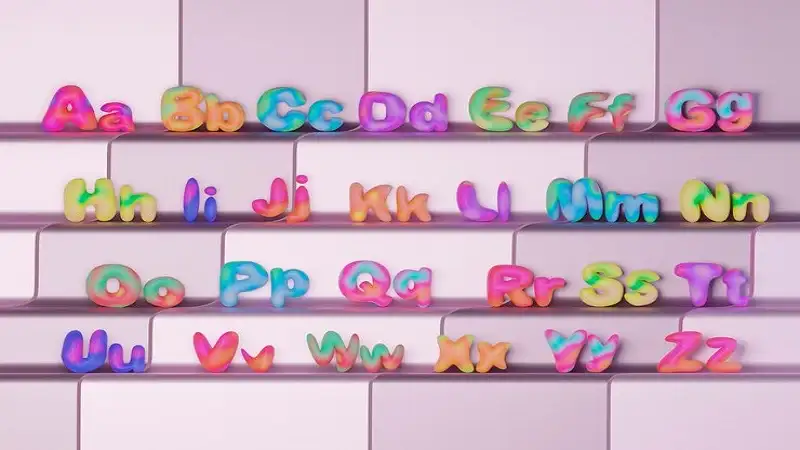Have you ever come across a cryptic string like Alphabet:7zdp-dhgtda= ABC and wondered what it means? Well, you’re not alone! This strange sequence of characters has sparked curiosity and speculation across different forums, cryptography communities, and even among casual readers. But what exactly does this string represent, and is it part of a larger puzzle? Let’s dive into this digital enigma.
The World of Cryptography and Codes
Throughout history, codes have played a critical role in communication. From ancient civilizations using ciphers to send military orders, to modern governments encrypting sensitive data, cryptography—the art of writing or solving codes—remains one of the most essential tools in information security. One of the most basic forms of cryptography involves the alphabet and numbers, and it’s within this realm that our mysterious string falls.
Decoding the Equation: What Does It Mean?
Looking at Alphabet:7zdp-dhgtda= ABC we see a combination of letters and numbers, but what does it signify? Let’s break it down.
- “alphabet” could signify that this code is alphabet-based.
- “7zdp-dhgtda” seems like a ciphered string, possibly obfuscated text.
- “abc” may appear simple, but in cryptography, simple things can have deep meanings.
To decode this properly, we must consider different ciphers that use the alphabet as their base, such as Caesar ciphers, Vigenère ciphers, or even substitution ciphers.
Alphabet-Based Ciphers
In the realm of cryptography, alphabets are often used in substitution ciphers, where letters are replaced with others according to a set pattern. Famous examples include:
- The Caesar Cipher, where each letter is shifted by a certain number down or up the alphabet.
- The Vigenère Cipher, which uses a keyword to encrypt messages.
- The Enigma Machine, which famously used rotating sets of alphabets to encode messages during World War II.
Could “7zdp-dhgtda” be encoded using one of these methods? Let’s explore further.
What Could “7zdp” and “dhgtda” Represent?
The string Alphabet:7zdp-dhgtda= ABC is likely a ciphered message, but what could it represent? One possibility is that “7zdp” is an alphanumeric code, where numbers represent letters or shifts in the alphabet, and “dhgtda” is a ciphered word or acronym.
In modern cryptography, mixed strings of letters and numbers are often used in encryption keys, hash functions, or as part of steganography techniques where hidden data is embedded within regular text.
The Significance of “abc” in Cryptography
At first glance, “abc” might look trivial—it’s the first three letters of the alphabet, after all. But in coding and cryptography, “abc” can be a placeholder, a marker for something else. It could signify the beginning of an encrypted message, or it could represent basic elements that need further decryption.
Hidden Messages in Digital Text
We live in a world where codes are everywhere, often hidden in plain sight. Whether it’s QR codes, hash tags, or cryptic tweets, digital communication has embraced cryptography. Coded messages like Alphabet:7zdp-dhgtda= ABC could easily be slipped into emails, texts, or social media posts, waiting for someone with the right key to decode them.
Modern Day Uses of Cryptography
Cryptography is not just used by spies and hackers; it’s a part of our daily lives. Every time you send a secure email, transfer money online, or use your smartphone’s face recognition, cryptography is at work. Could a code like Alphabet:7zdp-dhgtda= ABC be part of a more significant cryptographic system in use today?
Social Media and Cryptography
It’s not uncommon for coded messages to appear on platforms like Twitter, Reddit, or even in YouTube videos. Sometimes, these messages are part of larger puzzles or games designed to engage audiences. In other cases, they might be secret communication between individuals.
The Role of AI in Cryptography
Artificial Intelligence (AI) is becoming a game-changer in decoding complex ciphers. By leveraging machine learning, AI can sift through billions of permutations to unlock the meaning behind coded strings like Alphabet:7zdp-dhgtda= ABC. The future of cryptography might even depend on AI to create and solve increasingly intricate puzzles.
Speculative Theories: What is “alphabet:7zdp-dhgtda= abc” Really?
At this point, there are many theories circulating about what this string could mean. Some believe it’s part of an Alternate Reality Game (ARG), a genre of interactive storytelling that uses real-world elements and puzzles to engage participants. Others suggest it’s an encryption key or part of a more significant digital mystery.
ARGs (Alternate Reality Games) and Cryptography
ARGs often use cryptography to immerse players in a puzzle-solving experience. Codes like Alphabet:7zdp-dhgtda= ABC could be part of a larger narrative, leading players to websites, real-world locations, or new clues. These games thrive on community participation, with players working together to crack ciphers.
Practical Applications of Coded Strings
In addition to entertainment, coded strings are used in business and government for data encryption and secure communication. National security agencies, for example, rely on cryptography to protect sensitive information. Decoding these strings is not just a hobby; it’s essential for keeping secrets safe.
How to Crack Complex Codes
For those new to cryptography, cracking codes might seem impossible. However, many resources and tools are available to help amateurs learn the art. Websites like dcode.fr and Cryptii provide online decryption tools for beginners. Books and forums dedicated to codebreaking can also be valuable resources.
Conclusion:
As of now, Alphabet:7zdp-dhgtda= ABC remains a mystery. Is it part of an ARG? A cryptographic puzzle? A simple code waiting to be cracked? Only time (and maybe a bit of AI) will tell. What’s clear, though, is that cryptography continues to fascinate and challenge us, offering endless opportunities to dive into the world of hidden messages.Read More infotimedod.
